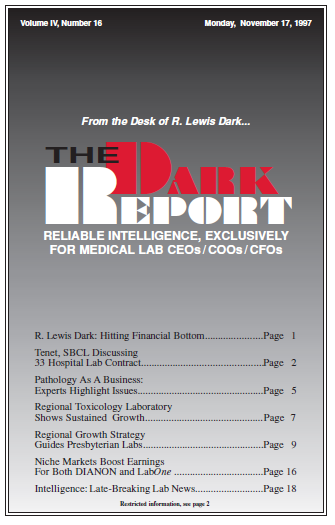CEO SUMMARY: Over a three-year period, this regional substance abuse laboratory has shown dramatic growth in revenue and operating profits. Strong leadership combined with good implementation skills fuel this lab’s success. HERE’S ANOTHER QUIET SUCCESS story about a regional laboratory. At a time when most clinical laboratories are struggling to maintain a flat revenue base, Laboratory …
Regional Tox Laboratory Shows Sustained Growth Read More »
To access this post, you must purchase The Dark Report.


